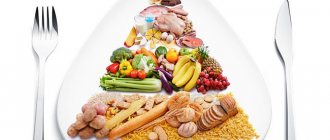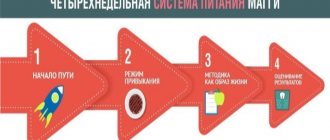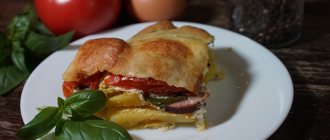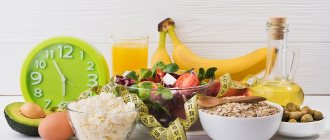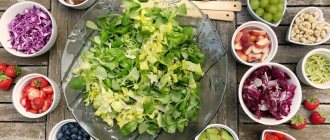Not only beginners, but also professionals may not immediately choose the right nutrition for a bodybuilder to achieve great shape. Below, the proposed fundamental principles of menu design in bodybuilding will take you to the level of a professional.
If you want to build muscle, lose fat, or get in shape, you will need a specific nutrition strategy, which will depend on your chosen goal. We have outlined approximate plans and a bodybuilder’s diet that corresponds to each of the three tasks. We will also indicate the calorie, carbohydrate, protein and fat intake standards that you should strive for daily.
Stock up on the items on our list to enjoy delicious, nutritious, home-cooked meals year-round. We will additionally offer examples of recipes with options for replacing products to diversify your pumping menu for the entire preparation period. So, here is a convenient universal guide to the types of food and how to prepare it, so that nutrition during training in the gym does not raise questions.
The composition of the menu is determined by the goals and schedule of strength training; we advise you to first learn how to calculate the kbju for the correct selection of products. The meals in our plan fall into two categories: those that include and those that do not include starchy carbohydrates.
Grocery list
Pre- and post-workout meals should be high in starchy carbohydrates but low in fat. It will make you stronger and provide you with the energy to support muscle growth. Proper nutrition for jocks who are training to gain mass should include more of these dishes in their daily diet. In between workouts, you should limit the amount of starchy carbohydrates and focus on fats. This way you will speed up the fat burning process.
Products sources of starchy carbohydrates for creating a bodybuilder’s menu:
- Starchy foods: brown rice, quinoa, potatoes, oatmeal, whole grain pasta, baked goods, cereals, cereals
- Protein products: protein powder, egg white, whole eggs (dosed), lean meat, white fish, Greek yogurt
- Fruits, vegetables and legumes: exotic fruits, green or fibrous vegetables, legumes
- Vegetable oil: use sparingly, a teaspoon instead of a tablespoon
Starch-free food is prepared from:
- Protein foods: protein powder, eggs, white and red meat, fatty or white fish, Greek yogurt. Here you will find the best high quality protein rich foods.
- Fruits, vegetables and legumes: berries, green or fibrous vegetables, beans (in small quantities)
- Vegetable oil or fat: measure with a tablespoon instead of a teaspoon. Avocado, seeds and nuts, coconut oil, canola mayonnaise, full-fat cheese.
Note: A “post-workout snack” refers to a shake or meal rich in quickly digested carbohydrates.
Meal planning.
Before you think through your menu, determine your goal:
- Mass gain.
- "Drying".
Nutrition for these two approaches is different, so you should initially understand your training goal. A bodybuilder should eat 5-6 times a day. It is not necessary to eat complex meals all these times. You can have 3 standard meals and snacks. To plan a bodybuilder's nutrition, you need to calculate calories. Calculation formula:
- Current weight x 30. If you are drying.
- Current weight + 500 (1000) calories if you plan to gain weight. This formula can be adjusted, most often everything is individual. Your parameters should be taken into account. If during this diet you feel hungry, then you can safely add calories to your diet.
Adjust your menu yourself as you go along to achieve the best result. Read the article about how much protein you need to drink to gain weight.
Diet for a beginner
Norm: 2500 Kcal, 218 g carbohydrates, 218 g protein, 83 g fat
If you want to improve your shape and become more energetic in training, this option will be the most optimal. It limits carbohydrate intake from food and sets a high level of protein intake. It focuses on foods with antioxidant properties that can improve the condition of blood vessels and prevent inflammatory processes - these two factors activate the aging process of cells.
Meal schedule
- Dish 1: Starchy-carbohydrate
- Meal 2: Low/No Carb
- Meal 3: Low/No Carb
- Meal 4: (Post-workout snack) Starchy-carbohydrate
- Dish 5: Starchy-carbohydrate
Recommended Recipes
Dish 1
- Greek yogurt - one and a half cups (tbsp.)
- Raspberries - 1/2 tbsp.
- Muesli (vanilla, almond, or without fillers) – 1/3 tbsp.
- Eggs (source of Omega-3) – 3
Dish 2: Double chocolate smoothie with cherries
- Protein powder (chocolate flavor) – 2 servings
- Coconut milk - 1/4 tbsp.
- Cherries – 3/4 tbsp.
- Flax seeds – 1 tablespoon (tbsp.)
- Cocoa powder – 1 tbsp. l.
- Ice – 3-4 pieces
- Water – 2-3 tbsp.
Dish 3: Burger with lettuce
- Lettuce – 2 sheets
- Ground beef (5% fat) – 227 g
- Tomatoes – 2 rings
- Red onion – 2 slices
- Ketchup – 1 tbsp. l.
- Mayonnaise (canola) – 1 tbsp. l.
- Green beans – 3 tbsp.
Meal 4: Post-Workout Snack
- Protein bars (recovery drink) – 1 serving
Dish 5: Shrimp with spinach salad and side dish of brown rice
- Shrimp – 170 g
- Brown rice - 1/4 tbsp.
- Spinach – 4 tbsp.
- Feta cheese – 1/4 tbsp.
- Half paprika
- Olive oil (Extra virgin) – 2 tbsp. l.
- Raspberry substitutes: 5 chopped strawberries, 1/2 tbsp. blueberries, 2/3 tbsp. blackberries or 1 tbsp. l. raisins
- Instead of muesli: 1/3 tbsp. oatmeal or rolled oatmeal flakes, 3/4 tbsp. breakfast cereal Fiber One or 2/3 tbsp. organic flakes
- Coconut milk alternative: 2 tbsp. l. chopped walnuts
- Cherries are replaced: 1 tbsp. blackberries
The difference between the diet of an ordinary person and the diet of a bodybuilder
The diet of a bodybuilder is significantly different from the traditional diet of an ordinary person. Moreover, these differences consist not only in the products themselves, but also in the portion sizes and frequency of meals. An ordinary person, due to the lack of heavy physical activity, does not need as many nutrients as a bodybuilder. Therefore, the diet of most of these people consists of 3 meals a day, and the kind of food that they want, and not the kind that they need.
Bodybuilders cannot afford this. Their eating schedule is scheduled for 4-6 small meals a day. Food should be balanced and adjusted to the training program that the bodybuilder is currently engaged in. For example, to gain muscle mass, our body needs proteins and carbohydrates in fairly large quantities. Small portions are due to the fact that it is easier for the body to process them - less energy is spent on processing, and thanks to small portions, more nutrients from food are absorbed.
Every good bodybuilder, unlike the average person, tries to limit himself as much as possible from eating fatty foods. The exceptions are unsaturated fats found in fish, as well as in some types of oil, such as peanut, sunflower and olive. Such fats even benefit those involved in heavy sports. And yet, the main difference between the nutrition of a bodybuilder and an ordinary person is that bodybuilders, with the help of their diet, pursue certain goals, which we will talk about later.
Nutrition for bodybuilders to gain muscle mass
This mass-building diet is perfect for lean men who want to build muscle while training in the gym.
Norm: approximately 3000 Kcal, 300 g carbohydrates, 225 g protein, 100 g fat
Forming new muscle fibers requires a high-calorie, high-carbohydrate diet. Please note that a mass-gaining nutrition program does not imply endlessly eating everything that catches your eye. Quite the contrary, you should consume high-quality, nutritious, carbohydrate-rich food in doses during the hours of greatest need for it - before and after completion of the training.
Please note that this meal plan is suitable for those who go to the gym in the afternoon. If you train in the morning, it's enough to switch up your meals so that you eat starchy foods during your pre- and post-workout snacks. Next, stay away from starchy carbohydrates throughout the day.
Meal schedule
- Dish 1: Starchy-carbohydrate
- Meal 2: Low/No Carb
- Meal 3: Low/No Carb
- Meal 4: (Post-workout snack) Starchy-carbohydrate
- Dish 5: Starchy-carbohydrate
- Dish 6: Starchy-carbohydrate
Recommended Recipes
Dish 1: Scrambled eggs with cheese and shallots
- Eggs (source of Omega-3) – 3
- Egg whites – 4
- Cheese (cheddar) – 1/4 tbsp.
- Shallots – 2
- Ezekiel bread – 2 pieces
- Apples – 1
Dish 2: Blueberry and almond smoothie
- Protein powder (vanilla flavor) – 2 servings
- Blueberries – 1 tbsp.
- Almonds – 28 g
- Almond milk – 1 tbsp.
- Water – 1 tbsp.
- Ice – 3-4 pieces
Dish 3: Steak with tomato and bean salad
- Steak (grilled flank steak) – 170 g
- Tomatoes – 1
- Half a cucumber (sliced)
- Chickpeas – 1 tbsp.
- Olive oil – 1 tbsp. l.
Meal 4: Post-Workout Snack
- Protein powder (recovery drink containing 50g carbohydrates and 25g protein) – 1 serving
Dish 5: Chicken with quinoa salad
- Chicken meat – 170 g
- Quinoa – 1/3 tbsp.
- Walnuts – 2 tbsp. l.
- Raisins – 2 tbsp. l.
Dish 6: White fish with yams and parmesan
- Tilapia – 170 g
- Parmesan cheese – 2 tbsp. l.
- Yams – 2 (medium size)
- Butter – 1 tbsp. l.
- Broccoli – 1 tbsp.
- Egg white substitutes: 2 slices turkey bacon, 2 small chicken sausages, 2 slices Canadian bacon or 1/4 cup. canned salmon
- Shallots can be replaced: 2 tbsp. l. salsa, 1/4 tbsp. chopped onion, or 2 tbsp. l. chopped sun-dried tomatoes.
- Blueberry alternative: 3/4 cup. frozen mango
- Instead of chicken fillet: 170 g pork tenderloin, 141 g buffalo ribeye, 141 g beef upper thigh
- Quinoa analogue: 1/3 tbsp. couscous, 1/4 tbsp. brown or black rice
- Substitution for tilapia: 141 g tuna steak, 198 g cod, 170 g shrimp
- Yams are replaced: 1/3 tbsp. agaric, wheat or pearl barley
Basic diet for a bodybuilder
Naturally, you need to start with the athlete’s basic diet. Since there are individual differences in metabolism, as well as the activity level of each athlete, using standard equations to calculate the number of calories does not make sense, and it will not work. As a basis for calculations, it is necessary to take the number of calories that are absorbed at the initial stage of the training process and constantly adjust their consumption depending on the results.
Such a program requires tracking the exact amount of calories and macronutrients over the next 6 weeks of active training. Such an approach may be new and unfamiliar, so it is better to find information about it on the Internet and spend a little time studying the very meaning of this technique. The fact is that many athletes blindly adjust their calorie intake, and then complain about the ineffectiveness of their training.
Typically, an athlete does not know exactly how many calories he is consuming. Therefore, you will have to start a diary and, using special programs, keep notes in the first three days. It is necessary to record everything that is eaten during this period. There are special applications for smartphones that will help you calculate average calorie consumption data for a given period of time. In other words, you will have to pay close attention to your nutrition.
To speed up the process of increasing muscle volume, it is necessary to add about 300 kcal to the basic indicators (average). Over the next 2 weeks, it is necessary to monitor the increase in body weight and volume, measuring the volume of the chest, neck, arms, etc. During the same period, you will have to measure the level of body fat using a caliper, guided by the following factors:
- if you are gaining weight without fat deposits, then you need to add another 300 kcal to your diet (daily);
- if there is no increase in body weight, then you will have to add about 500 kcal.
This process is repeated every couple of weeks, adding more and more calories, but there are some nuances here too.
Athlete's diet. What it should be like.
Eating for weight loss
The processes of gaining muscle mass and fat mass are closely interrelated. This is our physiology and nothing can be done about it. While gaining muscle mass, we also gain fat mass, due to the large amount of calories consumed, which are necessary for muscle growth. Therefore, it is worth alternating a training program for weight with a program for relief. This will allow you to get rid of excess fat and leave muscle mass at the same level. But, again, without proper nutrition there is no way here.
As mentioned above, a bodybuilder’s nutrition has some goal, in this case it is losing excess weight. The essence of such a diet is very simple: you need to consume less energy from food than our body spends. And since the energy for the body is carbohydrates, it is precisely their quantity that needs to be reduced. In this way, we will force our body, due to the lack of incoming carbohydrate energy, to use and burn its natural reserves - fats.
You still need 2 grams of protein per kilogram of weight, this is due to the fact that the body also uses the proteins contained in the muscles as energy and, breaking them down into amino acids, also uses them as fuel. A sufficient amount of dietary protein will prevent this process and leave the muscle fibers intact.
